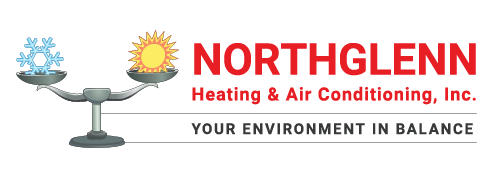
If you’re thinking over air conditioner installation in Northglenn, you should also be looking at your new air conditioner’s SEER rating.
SEER is short for Seasonal Energy Efficiency Rating. In summary, it measures how capable your air conditioner is at changing electricity into cooled air. A bigger number means your air conditioner is more efficient, which is great for your cooling bills.
However, there are many differing options to choose from for air conditioners. And a higher SEER rating typically includes a more expensive price. So, how can you find out which one is best for your home?
At Northglenn Heating & Air Conditioning, we offer a free, no-pressure home comfort analysis. You can book one by contacting us at 303-452-4146. Our skilled air conditioner installers will partner with you to help you find the right air conditioner for your home. Plus, they’ll also give you a free, no-obligation estimate.
For the time being, let’s review SEER ratings and how they can affect your family’s comfort. And your electrical costs.
Does SEER Rating Really Matter?
In 2016, the federal government created new SEER rules. New air conditioners are mandated at least 13 SEER in the northernmost United States and 14 SEER in the southeast and southwest. If you’re not sure when you had your air conditioner installed or what its SEER ranking is, you can locate the sticker on the unit outside your house. If you can’t locate the sticker, you can get in touch with us at 303-452-4146 for assistance.
If your air conditioner was put in in advance of that year, it’s probably much less efficient. Air conditioner technology has rapidly evolved in the past few years, with major progress in energy efficiency and smart home capacity. Using your new air conditioner with a smart thermostat could help you spend less on cooling bills, as the thermostat can intuitively change your temperature settings when you’re gone.
If your present air conditioner has a SEER rating between 8 and 10, installing a 14-SEER system could save you an estimated 30–50% on annual utility bills. Your savings relate to your air conditioner size and your temp settings.
Is a Higher SEER Rating Always Better?
An air conditioner with a greater SEER rating will be more efficient at transforming electricity for cooling. The best efficient models, which can go as high as 26 SEER, have ENERGY STAR® certification. This endorsement signifies the air conditioner has achieved EPA rules for energy savings and environmental conservation.
While ENERGY STAR air conditioners are typically more expensive, you’ll usually get the difference returned over time through cheaper cooling expenses. These air conditioners, which are usually rated 16 SEER and greater, use about 8% less electricity than other new units, according to ENERGY STAR.
One of the largest differences between a 14 SEER and 16 SEER is variable-speed capacity. A variable-speed air conditioner can run at different speeds. This fine-tunes comfort for your home while keeping your electric bills low. It can also keep temperatures and humidity more balanced, since it can run for longer without needing a lot more electricity.
When installing a variable-speed air conditioner, you’ll have to ensure that your furnace or air handler is compatible. This is since your air conditioner uses this equipment’s blower to send chilled air around your house. Furnaces only work for around 20 years, so if yours is getting old, we advise getting furnace installation at the same time so you can get all the advantages of your variable-speed air conditioner.
When you’re prepared to replace your air conditioner, the cooling specialists at Northglenn Heating & Air Conditioning are here to assist you. Call us at 303-452-4146 to request your free home comfort analysis now.
